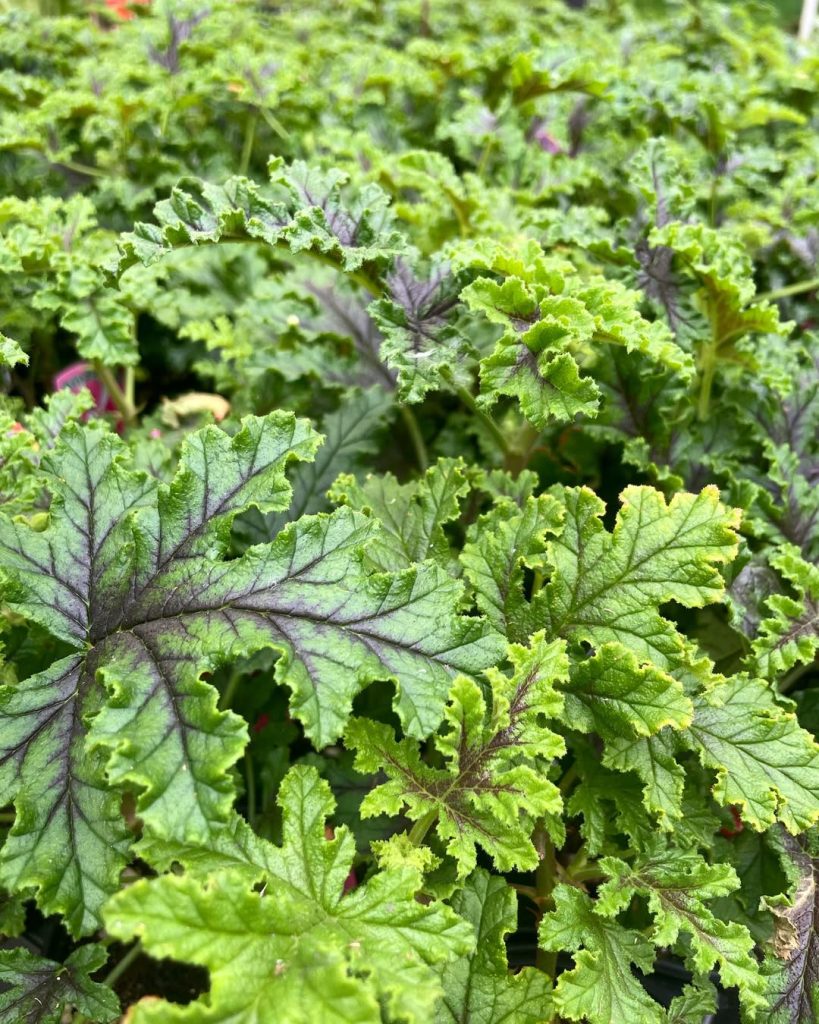Enjoying your outdoor living space should be relaxing—not a battle against buzzing, biting pests.
Whether you’re hosting summer gatherings, enjoying quiet mornings on your back porch, or simply upgrading your backyard with modern patio furniture and back porch decor, mosquitos can quickly ruin the vibe. Fortunately, Mother Nature has your back. There are several attractive, easy-to-grow plants that do more than just beautify your garden—they actually repel mosquitos!
Here are 15+ gorgeous, fragrant, and mosquito-repelling plants to help you enjoy your patio or porch without constant swatting. These plants are perfect companions for your modern back porch ideas, adding color, function, and natural protection to your outdoor oasis.
1. Lavender

Lavender is more than just a pretty purple flower—it’s a powerhouse when it comes to repelling mosquitos. With its unmistakable fragrance and calming aesthetic, lavender adds a classic, cottage-inspired charm to any back porch or patio.
The strong scent that we love is exactly what mosquitos hate. The plant contains linalool, a compound that disrupts the mosquito’s ability to smell. That makes lavender an excellent choice for placing in containers near seating areas or lining garden pathways.
Lavender thrives in full sun and well-drained soil. If you’re designing a minimalist, modern back porch, consider using large terra cotta pots or sleek concrete planters to house your lavender plants. Their silvery-green foliage pairs beautifully with neutral tones and modern patio furniture.
Beyond pest control, lavender offers many additional benefits—it attracts pollinators like bees and butterflies, and its dried flowers can be used in DIY sachets or essential oils.
A few strategically placed pots of lavender can turn your patio into a stylish, mosquito-resistant sanctuary.
2. Citronella (Lemongrass)

You’ve likely seen “citronella” listed on candles and torches meant to repel bugs, but did you know the real thing is even more effective?
Citronella, also known as lemongrass, is a tall, tropical grass that emits a strong citrus scent. The plant’s natural oils are incredibly effective at masking scents that attract mosquitos. Its fresh, clean aroma is both pleasant to humans and offensive to insects.
This plant can grow quite large—up to 6 feet tall in some climates—so it’s ideal as a border around patios or near entrances to your home. For smaller spaces or apartment balconies, citronella does well in large, sturdy containers.
Citronella loves warm weather and full sun. Think of it as a tropical flair for your outdoor living area. Pair it with bold outdoor throw pillows or woven lanterns for a fun, breezy vibe that complements your back porch decor.
Bonus tip: you can crush the leaves and rub them on your skin (if you’re not sensitive) for a natural mosquito deterrent when you’re outside.
3. Marigolds

Bright, cheerful, and low-maintenance—marigolds are a triple threat when it comes to natural mosquito control.
These golden and orange blooms contain pyrethrum, a compound used in many commercial insect repellents. It’s particularly effective at warding off mosquitos, aphids, and even whiteflies, making marigolds a favorite in vegetable gardens and flower beds.
Marigolds are sun-lovers and can thrive in pots, window boxes, or garden borders. Try lining your patio or porch steps with a few colorful containers—this not only helps repel mosquitos but also adds a pop of seasonal color to your outdoor aesthetic.
Their bold hues contrast beautifully with modern black or white patio furniture and neutral-toned outdoor rugs. Whether you’re going for farmhouse charm or chic contemporary vibes, marigolds bring both beauty and function.
For best results, position them near doors and windows where mosquitos are likely to try sneaking inside.
4. Basil

Basil isn’t just for your kitchen—it’s also a mosquito-fighting hero right on your back porch.
The strong, peppery aroma of basil repels mosquitos effectively, especially varieties like lemon basil and cinnamon basil. The oils in the leaves interfere with a mosquito’s sense of smell, making it harder for them to locate you.
Basil is easy to grow in containers or garden beds. It loves sun and regular watering, and it thrives in warm weather—making it a summer favorite for both foodies and outdoor enthusiasts.
Place pots of basil on your outdoor dining table, side tables, or along your patio railings. Not only will it keep the bugs at bay, but it’ll be right at your fingertips when you’re whipping up fresh caprese salads or pasta dishes.
Design tip: a wooden herb box filled with basil, thyme, and oregano adds a rustic charm to modern back porch ideas and brings functionality to your back porch decor.
5. Peppermint
Source
Cool, fresh, and a natural bug deterrent—peppermint is a superstar in any mosquito-repelling garden.
This aromatic herb contains menthol, which not only smells refreshing but also disrupts the sensory receptors of mosquitos. Peppermint oil is often used in natural insect repellents and sprays for this reason.
One thing to keep in mind: peppermint spreads quickly. It’s best to plant it in containers unless you want it taking over your garden. Stylish ceramic or galvanized steel pots are a perfect way to keep it contained and looking sharp on your porch.
Peppermint thrives in partial shade and well-drained soil, making it a versatile option for those with covered patios or shaded outdoor living spaces. You can even dry the leaves to make tea or use them in cocktails for those long summer evenings outdoors.
Pro tip: Crush a few peppermint leaves and rub them on your skin before heading outside. You’ll smell amazing and be less appetizing to mosquitos.
6. Rosemary
Source
If you love earthy aromas and delicious food, rosemary might already be a staple in your kitchen—but it also happens to repel mosquitos quite effectively.
This hardy herb contains eucalyptol and camphor, which give it that unmistakable piney scent that mosquitos can’t stand. These natural oils interfere with their ability to sense human presence, making rosemary a practical, multitasking plant.
You can grow rosemary in decorative pots, raised beds, or directly in your landscaping. It enjoys full sun and can handle slightly drier conditions than many other herbs, making it perfect for sunny patios.
Tall rosemary plants also add vertical interest to your back porch decor. Tuck them into sleek, modern planters to create stylish herb corners that pull double duty.
Bonus: Toss a few sprigs of rosemary into your outdoor fire pit or grill—when burned, the herb releases even more mosquito-repelling compounds into the air.
7. Catnip
Source
Believe it or not, your cat’s favorite plant is more effective at repelling mosquitos than some commercial sprays!
Catnip contains a compound called nepetalactone, which has been shown to be 10 times more effective than DEET in repelling mosquitos. It’s a member of the mint family and has a light, pleasant aroma that many humans enjoy (and mosquitos decidedly do not).
Catnip is very easy to grow and thrives in sunny or partially shaded spots. While it can get a bit wild and leggy, regular trimming keeps it looking tidy—and encourages more lush growth.
To incorporate catnip into your back porch design, plant it in rustic terra cotta pots or woven hanging baskets for a breezy, boho feel. It works beautifully in both modern and traditional outdoor settings.
Of course, if you have cats, expect frequent visits—they’ll thank you for the treat!
8. Bee Balm (Monarda)
Source
Also known as wild bergamot, bee balm is a striking and fragrant addition to any outdoor space—and yes, it repels mosquitos too.
This plant produces clusters of vibrant red, purple, or pink flowers that attract pollinators like bees and hummingbirds, but its essential oils are a turn-off for mosquitos. Bee balm contains thymol, a natural compound that masks human scent and drives insects away.
Bee balm is a great fit for cottage-style gardens or eclectic patio setups. Its tall stems and vibrant blooms make it a natural focal point, especially when paired with minimalist back porch decor or placed in clusters around seating areas.
This perennial thrives in full sun and moist, well-drained soil. In cooler climates, it will come back year after year, growing more lush and beautiful over time.
The added bonus? Bee balm’s flowers are edible and make a lovely garnish for summer drinks or salads.
9. Lemongrass (Cymbopogon citratus)
Source
Though often confused with citronella, lemongrass is a separate plant that packs its own mosquito-repelling punch.
Lemongrass contains high levels of citral and geraniol, two compounds that effectively repel mosquitoes. Its fresh, lemony scent is a natural deterrent for pests and a pleasant aromatic addition to your outdoor living space. Visually, it’s a stunning ornamental grass with tall, arching blades that can add texture and height to container gardens or borders.
Perfect for sunny spots, lemongrass thrives in warm, humid climates and requires well-drained soil. It’s a top choice for modern back porch ideas where form and function matter—its architectural look fits beautifully with minimalist or boho-chic patio decor.
In addition to its insect-repelling benefits, lemongrass is edible and widely used in Southeast Asian cuisine. You can trim a stalk or two for soups, teas, or marinades right from your backyard.
Try planting it near seating areas, patio entrances, or garden walkways to enjoy both its beauty and its protective perks.
10. Scented Geraniums (Pelargonium citrosum)
Source
Often called the mosquito plant, scented geraniums are known for their citrus-like aroma that sends mosquitos packing.
These charming flowering plants are typically infused with citronella oil and give off a strong lemony scent when touched or brushed against. While they aren’t true citronella plants, their effectiveness at deterring mosquitos is impressive—especially when you crush their leaves to release more of their oils.
Scented geraniums produce beautiful, lacy foliage and delicate blooms that look lovely in hanging baskets or decorative pots. They thrive in full sun and do well in warm, dry climates, making them an ideal pick for back porch decor in the southern U.S.
Add them to your outdoor side tables or steps for a splash of color that also serves a practical purpose. They’re especially well-suited for homes with modern patio furniture, as their cascading growth adds softness and contrast to contemporary lines.
Bonus tip: these plants are also drought-tolerant and require minimal maintenance.
11. Lemon Balm
Source
Part of the mint family, lemon balm is a hardy, fragrant herb with mosquito-repelling properties and an uplifting citrus scent.
The plant contains citronellal, a compound that acts as a natural bug repellent. While lemon balm is effective at discouraging mosquitos, it’s still gentle and calming for people—especially when brewed into a tea.
Lemon balm is incredibly easy to grow and spreads quickly. To prevent it from overtaking your garden, it’s best grown in containers. Choose stylish planters in muted tones to match your modern back porch theme or go for vintage enamel pots for a more rustic vibe.
It grows best in full sun to partial shade and requires minimal care. You can keep a pot near your outdoor seating area and pinch the leaves as needed to release their natural oils.
Its dual use as a mosquito repellent and medicinal herb (known for its stress-relieving properties) makes it a smart addition to any outdoor living space.
12. Allium (Ornamental Onion)
Source
Looking for a bold, dramatic flower that also keeps pests at bay? Look no further than allium, a member of the onion family.
These striking plants produce globe-like purple or white flower heads that tower above other plants, making them an instant eye-catcher. While we may love their sculptural beauty, insects—including mosquitos, aphids, and even deer—definitely do not. Allium contains sulfur compounds that act as a natural insecticide.
Alliums are perennials, which means they’ll return year after year with little maintenance. They do best in full sun and well-drained soil, and they’re an excellent choice for layered garden beds or border landscaping.
Their dramatic shape pairs perfectly with modern patio furniture and geometric back porch decor, adding interest without clutter.
Try planting them behind a row of low-growing herbs or flowers to create depth and texture in your garden design while doubling down on mosquito protection.
13. Eucalyptus
Source
With its tall, silvery-blue leaves and distinctive scent, eucalyptus is both elegant and practical for mosquito control.
Eucalyptus leaves are packed with eucalyptol, a compound that interferes with a mosquito’s olfactory system. Not only does the plant repel mosquitos, but it also deters ticks, fleas, and other annoying pests.
Eucalyptus trees can grow large, but there are smaller container-friendly varieties (like Eucalyptus gunnii) that are perfect for patios or porches. Place a few potted eucalyptus plants near your seating areas or use them as living screens to create privacy.
The minimalist color palette of eucalyptus—pale greens and silvers—works wonderfully with modern back porch ideas. Pair them with concrete planters or matte black pots for an effortlessly chic look.
Bonus: The leaves can be cut and added to indoor floral arrangements or hung in your shower for a spa-like experience.
14. Bay Laurel (Bay Leaf)
Source
Best known for its culinary uses, bay laurel is also a stealthy mosquito repellent that deserves a spot on your porch or patio.
The glossy, deep green leaves of the bay laurel tree contain eugenol, a naturally occurring compound that repels mosquitos and other biting insects. The plant has a subtle yet pleasant fragrance that intensifies when the leaves are crushed.
Bay laurel can be shaped into elegant topiaries or grown in large containers, making it a decorative yet functional feature for outdoor living spaces. It does best in warm, sunny climates and needs well-drained soil.
Add it to your modern back porch decor by placing it in sleek ceramic pots or pairing it with trailing herbs for a layered, European-style herb garden.
As a bonus, you’ll have fresh bay leaves on hand for cooking savory soups, stews, and sauces.
15. Mint (Spearmint & Other Varieties)
Source
Mint is one of the most versatile mosquito-repelling plants you can grow—and chances are, you already have some in your garden!
Whether it’s spearmint, apple mint, or chocolate mint, all varieties produce a strong scent that deters mosquitos. The menthol and other aromatic oils in the leaves are effective at confusing a mosquito’s sense of direction and making humans harder to locate.
Mint is best grown in containers because it spreads aggressively. Use long window boxes or modern rectangular planters to line your porch railings or balcony ledge. It’s a great way to add greenery and protection in a compact footprint.
It grows well in partial shade and prefers moist, well-drained soil. Plus, having mint nearby means you’re always ready to muddle up a mojito or garnish a summer fruit salad.
The scent alone will give your porch a spa-like ambiance while keeping pests at bay.
16. Wormwood (Artemisia absinthium)
Source
This less-common, silvery-green plant deserves a mention for its striking appearance and powerful pest-repelling properties.
Wormwood contains absinthin, a bitter compound that mosquitos and other insects detest. Traditionally used in herbal medicine and absinthe, this plant brings both mystique and function to your garden.
Its soft, fern-like leaves are stunning when placed against darker patio furniture or along gravel paths. Wormwood prefers dry, well-drained soil and full sun, making it a perfect pick for low-maintenance landscaping in drier climates.
Use it as a border plant or tuck it into decorative pots for a touch of drama and protection. Its cool, muted tone makes it a favorite for minimalist and modern back porch ideas.
Wormwood is toxic if ingested in large amounts, so be cautious if you have pets or small children. Still, it’s a fantastic choice for pest control in areas that are out of reach.
Conclusion: Designing a Mosquito-Free Outdoor Oasis
You don’t have to rely on harsh chemicals or clunky bug zappers to keep your outdoor space comfortable. With the right mix of mosquito-repelling plants, you can enjoy a beautiful, fragrant, and naturally protected back porch or patio.
From the cooling scent of peppermint to the citrusy zing of lemon balm, each of these plants offers its own unique flair—while working hard behind the scenes to keep pesky insects away. Whether you’re relaxing on your deck, dining al fresco, or dreaming up new modern back porch ideas, these plants effortlessly blend function with aesthetics.
Remember, you don’t need to choose just one. Combine several of these plants in containers, garden beds, or hanging baskets for maximum impact and visual appeal. Add in some modern patio furniture, cozy throws, and twinkle lights, and you’ll have a stylish, inviting space that’s also bug-free.
So go ahead—pour that iced tea, kick up your feet, and enjoy the great outdoors… without the bites.

